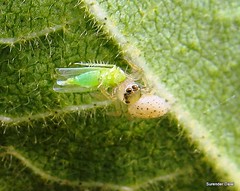
OUR ALLY BUSY IN WAR AGAINST PESTS!
Originally uploaded by Surender Dalal
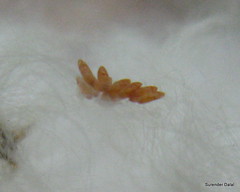
Eggs of cotton dusky bug laid in the lint -half opened bolls of cotton.these eggs are ready to hatch.
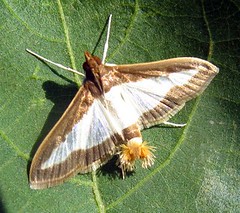
Diaphania indica is a pest on various members of the Cucurbitae family including Cucumber and Melon. Location; nidana (Jind),
haryana
Diaphania indica (Saunders, 1851)
Crambidae, Spilomelinae
Common Name: Pumpkin Caterpillar, Cotton Caterpillar, Cucumber Moth
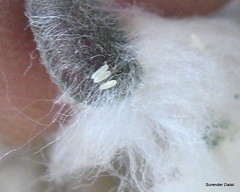
Eggs of a cotton pest laid near immature seesds of cotton. The pest is cotton dusky bug
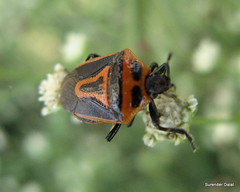
Perillus bioculatus;
Carnivorous bug on congress grass
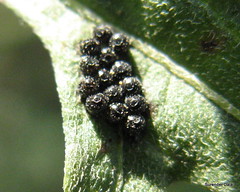
Eggs of two spotted bug
laid on a leaf of congress grass,

Neither major nor a minor,
pest of cotton now a days,
a insect to name

FUTURE OF FAST GROWING HARYANA
FAST DEVOLOPMENT OF HARYANA?
Those who have watched Haryana’s fast march towards industrialization are full of admiration of Haryana. It has about 1346 large medium industries,and 80,0000 small scale industries. It has about 1000/- projects with foreign technical/financial collaboration. The new industrial policy is being implemented with all earnestness since June 2005. The optimism that this small state with not many natural recourses and away from the sea posts is impressing vast sections very fast. Haryana has followed the national resolve “to support private efforts by further liberalizing and focusing investments in infrastructures and promotion of new technologies for sustained growth “The State Government is equally determined to build strong agriculture and social sectors in order to sustain the high economic growth of over 11 percent. It is keen to spread the benefits of this fast industrial growth to all segments of society. In the next 10 year an investment of Rs. 2 lakh crore is expected which would generate employment avenues for ten lakh youth. . It is observed that to beat the agrarian crises that is casting dark shadows, indusrialization and development of related service sector is the only answer. Really it is so? Big question. On the other side the state is faced with the devil of recession. The industrialists in Gurgaon,
With in this paradigm how the speed of 11 percent industrial growth will be sustained? Moreover, the Haryana is agriculture based Almost 70% people of Haryana are dependant over agriculture. How the industrialization and urbanisation will be able to absorb the displacement of people from agriculture?. In
AENASIUS IS AN EXOTIC & HEROIC WASP FOR THE NATURAL CONTROL OF MEALYBUG
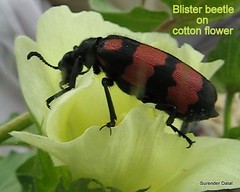
BLISTER BEETLE
Mylabris pustulata;
(Coleoptera : Meloidae
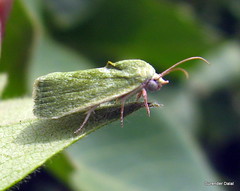
SPOTTED BOLLWORM in cotton
Order :: Lepidoptera
Family :: Noctuidae
Genus :: Earias insulana
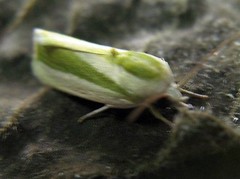
ADULT OF SPOTTED BOLLWORM
Earias vitella; noctuidae; Lepidoptera
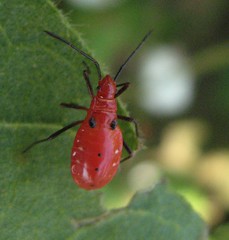
Dysdercus cingulatus:
Pyrrhocoridae;
Hymenoptera

Dysdercus cingulatus:
Pyrrhocoridae;
Hymenoptera
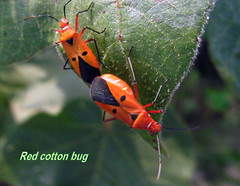
Dysdercus cingulatus:
Pyrrhocoridae;
Hymenoptera

Dysdercus cingulatus:
Pyrrhocoridae;
Hymenoptera
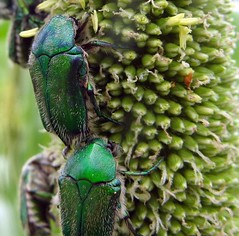
ROSE BEETLES ON PEARL-MILLET EARHEAD
Cetonia aurata;
Cetonidae:
Coleoptera

Cetonia aurata;
Cetonidae:
Coleoptera
Green rose beetle grazing on pearl-millet flowers
परजीवी,परभक्षी व रोगाणुओं के अलावा मिलीबग के दुश्मन परजीव्याभ भी होते हैं। परजीव्याभ अपने आश्रयदाता से छोटे होते हैं तथा अपना जीवन चक्र पुरा करने के लिए एक ही आश्रयदाता की भेंट लेते हैं। जिला जींद में निडाना के किसानों ने ऐसी ही एक परजीव्याभ संभीरका राजेश पुत्र महाबीर के खेत में कपास के पौधों पर मिलीबग के पेट में पलती हुई पकड़ी है। इसका नाम उन्होंने अंगीरा रखा है। अंगीरा का प्रौढ़ तो स्वतन्त्र जीवन जीता है पर इसकी बाल्यवस्था मिलीबग के पेट में पुरी होती है। आपको मालूम हो कि यह सम्भीरका मिलीबग के पेट में अपने अंडे से लेकर प्रौढ़ होने तक तक़रीबन पंद्रह दिन का समय लेती है। इस प्रक्रिया में मिलीबग को मिलती है -मौत। मिलीबग को परजीव्याभीत करने वाले इस भीरडनुमा जन्नौर को वैज्ञानिक अपनी भाषा में इसे एनासिय्स कहते है।
 जिला जीन्द में सरसों की फसल पर इस साल भी चेपे का आक्रमण हुआ है। लेकिन यह हमला हल्का एवम देर से हुआ तथा सौभाग्य से लेडिबिटल व सिरफ़डो मक्खी जैसे कीटभाजी कीट समय पर आ गये जिस कारण हमारी फसल पर इसके प्रकोप का नुकशान नहीं हुआ। चेपा अपनी वंश वृद्धि बिना नर मादा मिलन के भी कर लेता है। इसकी प्रसव वेदना की तो हमें जानकारी नहीं। पर इन्सान की तरह इसको ना तो किसी शिशु प्रजनन स्वास्थ्य कार्यक्रम की आवश्कयता पड़ती है और ना ही किसी सिजेरियन आपरेशन की जरूरत पड़ती है। काश !
जिला जीन्द में सरसों की फसल पर इस साल भी चेपे का आक्रमण हुआ है। लेकिन यह हमला हल्का एवम देर से हुआ तथा सौभाग्य से लेडिबिटल व सिरफ़डो मक्खी जैसे कीटभाजी कीट समय पर आ गये जिस कारण हमारी फसल पर इसके प्रकोप का नुकशान नहीं हुआ। चेपा अपनी वंश वृद्धि बिना नर मादा मिलन के भी कर लेता है। इसकी प्रसव वेदना की तो हमें जानकारी नहीं। पर इन्सान की तरह इसको ना तो किसी शिशु प्रजनन स्वास्थ्य कार्यक्रम की आवश्कयता पड़ती है और ना ही किसी सिजेरियन आपरेशन की जरूरत पड़ती है। काश !




